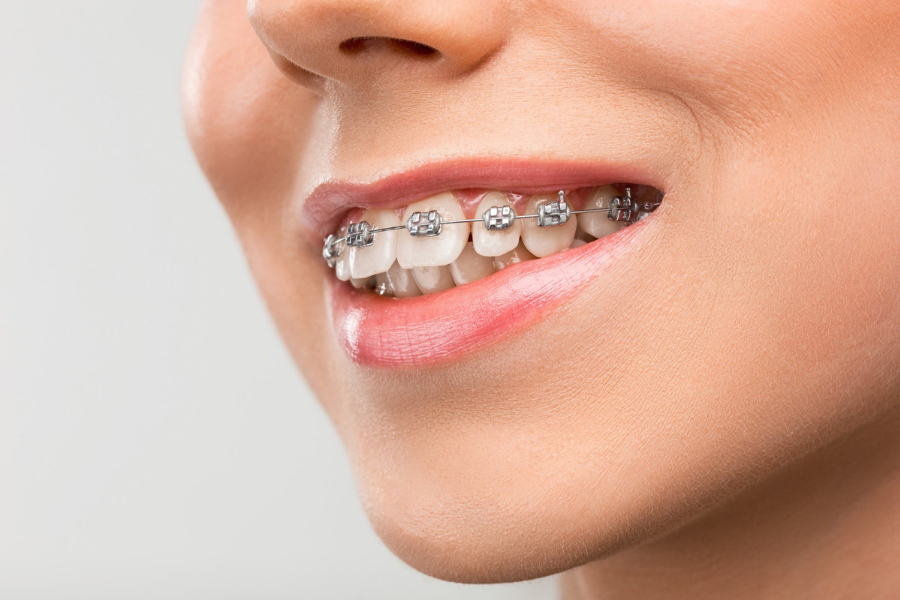Can Ifill Teeth Spacing Or Do I Need Braces? Exploring Your Options
Introduction
Teeth spacing, often referred to as diastema, is a dental issue that affects many individuals. Whether due to genetic factors, habitual behaviors, or other influences, gaps between teeth can cause concern from both aesthetic and health perspectives. This article delves into the question: Can these gaps be filled, or are braces necessary? While braces are a common method for correcting spacing, there are several alternatives available for those who wish to enhance their smile without committing to orthodontic treatment.
Understanding Can Ifill Teeth Spacing Or Do I Need Braces
Can Ifill Teeth Spacing Or Do I Need Braces occurs when there are noticeable gaps between two or more teeth. Although it frequently manifests between the two upper front teeth, diastema can also appear in other areas of the mouth. The causes of this condition are varied, encompassing genetics, habits such as thumb-sucking, improper swallowing reflexes, and gum disease. Depending on the underlying cause and the severity of the gaps, numerous treatment options exist to address teeth spacing effectively.
Causes of Teeth Spacing
Various factors contribute to the formation of gaps between teeth. Genetic predisposition often plays a significant role, influencing the size and spacing of an individual’s teeth. Those with smaller teeth or larger jawbones are more prone to developing gaps. In addition, childhood habits such as thumb-sucking can lead to misalignment, pushing teeth apart over time. Other causes include improper swallowing patterns, which can affect tooth positioning, and gum disease, which can lead to tooth loss or shifting.
Cosmetic Concerns of Teeth Gaps
For many individuals, gaps in their teeth can be a source of insecurity. These spaces may draw unwanted attention and affect how a person perceives their smile. While some people embrace the uniqueness of their dental arrangement, others may feel embarrassed or uncomfortable showcasing their teeth. Fortunately, advances in dentistry have provided numerous options to correct spacing issues and achieve a more aligned, confident smile.
Impact on Oral Health
In addition to aesthetic concerns, teeth spacing can have implications for oral health. Gaps can trap food particles, making it easier for plaque to accumulate, which increases the risk of cavities and gum disease. If the spacing is a result of gum disease, it may worsen over time, potentially leading to more serious dental issues. Closing these gaps can significantly improve overall oral hygiene and minimize the risk of dental complications.
How Dental Bonding Works
One of the simplest and most cost-effective solutions for closing gaps in teeth is dental bonding. This procedure involves roughening the surface of the tooth, applying a conditioning liquid, and then shaping a tooth-colored resin to fill the gap. A special light is used to harden the resin, and the tooth is polished for a natural appearance. Dental bonding can typically be completed in a single visit, making it a quick fix for minor gaps.
Benefits of Dental Bonding
Dental bonding presents several advantages. It is a less invasive alternative compared to braces and requires fewer visits to the dentist. The results are immediate, with the gaps being filled during just one appointment. Furthermore, bonding is generally more affordable than orthodontic treatments or veneers, making it an attractive option for individuals seeking cosmetic enhancements.
Veneers for Closing Gaps
For those seeking a more permanent solution, veneers can effectively close gaps between teeth. Custom-made from porcelain or composite resin, veneers are bonded to the front surfaces of the teeth. Not only do they fill gaps, but they also enhance the overall appearance of teeth by correcting issues such as discoloration, irregular shapes, or worn edges. Although veneers are pricier than dental bonding, they provide a durable and aesthetically pleasing result.
Traditional Braces vs. Clear Aligners
When considering options for correcting teeth spacing, braces have evolved significantly over the years. Traditional metal braces remain a popular choice, but clear aligners, such as Invisalign, have emerged as a more discreet alternative. Clear aligners gradually shift teeth into their correct positions without the need for metal brackets and wires, making them especially appealing for adults or individuals concerned about aesthetics.
Pros and Cons of Braces
Braces offer several advantages for individuals with considerable spacing or alignment issues. They provide long-lasting results and address both cosmetic and functional concerns. However, the treatment process typically requires a longer duration and more maintenance compared to dental bonding or veneers. Additionally, braces may cause discomfort, particularly following adjustments, and certain dietary restrictions may be necessary to prevent damage to the brackets.
Cost Comparison of Treatment Options
The cost of dental treatment for teeth spacing can vary widely depending on the method chosen. Dental bonding t ends to be the most budget-friendly option, as it incurs lower costs per tooth compared to veneers or braces. Veneers are generally more expensive due to their customized design and durability. Clear aligners and traditional braces can represent a more significant investment, but they offer long-term solutions for both spacing and alignment issues. Consulting with a dental professional can help determine the most cost-effective treatment tailored to individual needs.
Age Considerations for Treatment
can ifill teeth spacing or do i need braces can affect individuals of all ages. While orthodontic treatment is often more prevalent during childhood or adolescence, adults can also benefit from braces or other cosmetic solutions. Dental bonding and veneers, in particular, are popular among adults seeking to close gaps without committing to long-term orthodontic treatment. Consulting with a dentist or orthodontist can help identify the best course of action based on age, dental health, and personal preferences.
Consulting a Dentist or Orthodontist
If you’re grappling with the question of whether you can fill can ifill teeth spacing or do i need braces or if you need braces, consulting a dental professional is essential. A dentist or orthodontist can evaluate your specific situation, identify the underlying cause of the gaps, and recommend the most suitable treatment options. Whether bonding, veneers, or braces are the right choice for you, a dental professional will guide you toward the best solution to meet your needs.
Conclusion
In conclusion, addressing can ifill teeth spacing or do i need braces is vital for both cosmetic appeal and oral health. Various treatment options are available, including dental bonding and veneers, which can quickly and effectively fill gaps without the need for braces. However, in more severe cases, orthodontic treatments such as braces or clear aligners may be necessary to correct alignment issues. Consulting with a dental professional is the best way to determine the most appropriate course of action for your unique situation, ensuring a confident and healthy smile. Ultimately, the right treatment can enhance not only your appearance but also your overall dental health, contributing to a happier and more confident you.
FAQs
1. What is teeth spacing, and what causes it?
Teeth spacing, also known as diastema, refers to gaps between teeth. It can be caused by genetic factors, habits like thumb-sucking, improper swallowing patterns, and gum disease, among other reasons.
2. Can I fill teeth spacing without getting braces?
Yes, there are several options to fill teeth spacing without braces, including dental bonding and veneers. These cosmetic procedures can effectively close gaps and enhance the overall appearance of your smile.
3. How does dental bonding work to fill gaps between teeth?
Dental bonding involves roughening the tooth’s surface, applying a conditioning liquid, and then shaping a tooth-colored resin to fill the gap. The resin is then hardened with a special light, providing an immediate cosmetic improvement.
4. Are there any benefits to using veneers for closing teeth gaps?
Yes, veneers are a more permanent solution for closing gaps. They are custom-made from porcelain or composite resin and not only fill gaps but also enhance the appearance of teeth by correcting issues like discoloration and irregular shapes.
5. What are the pros and cons of traditional braces compared to clear aligners?
Traditional braces effectively address significant spacing and alignment issues but may require longer treatment times and can cause discomfort. Clear aligners, like Invisalign, are discreet and comfortable but may not be suitable for severe cases.
6. How much do different treatment options for teeth spacing cost?
Dental bonding is generally the most affordable option, while veneers can be more expensive due to their customization. Clear aligners and traditional braces are larger investments but offer long-term solutions.
7. At what age should I consider treatment for teeth spacing?
Teeth spacing can affect individuals of any age. While orthodontic treatment is common in children and teens, adults can also benefit from options like dental bonding, veneers, or braces to close gaps.
8. Why is it important to consult a dentist or orthodontist about teeth spacing?
Consulting a dental professional is crucial to evaluate your specific situation, identify the cause of the gaps, and recommend the best treatment options tailored to your needs and dental health.
9. Can teeth spacing affect my oral health?
Yes, gaps between teeth can trap food particles, making it easier for plaque to accumulate, which increases the risk of cavities and gum disease. Closing these gaps can significantly improve oral hygiene.
10. What should I do if I’m unsure whether to fill teeth spacing or get braces?
If you’re unsure about the best approach, schedule a consultation with a dentist or orthodontist. They can assess your dental health and recommend the most suitable treatment for your specific needs.
Get the inside scoop on celebrity fashion and red carpet looks at SyncTimes.co.uk.






